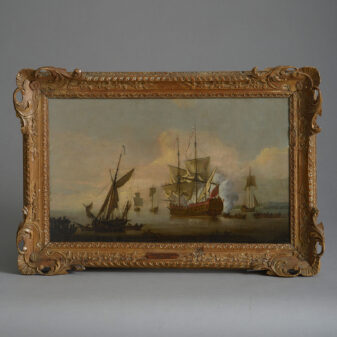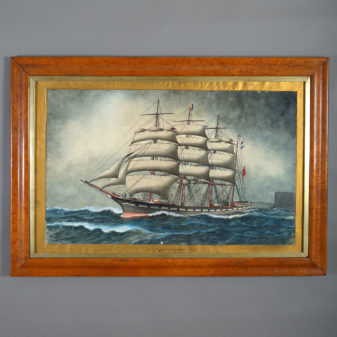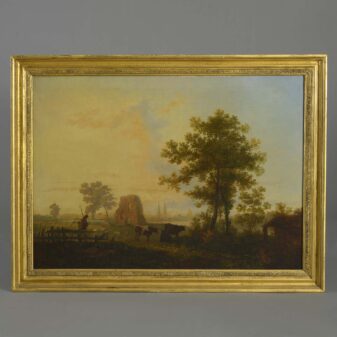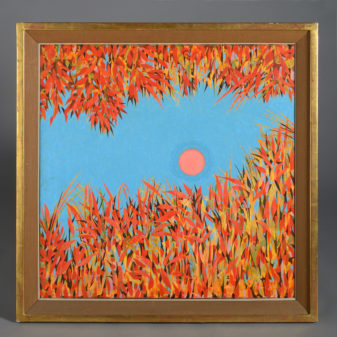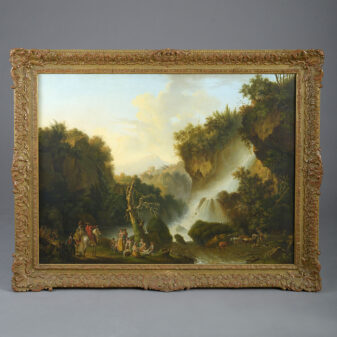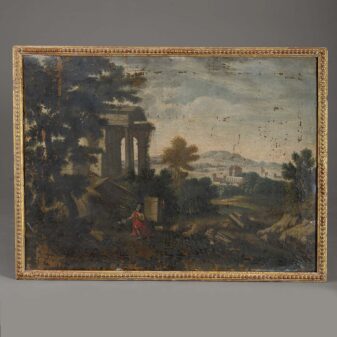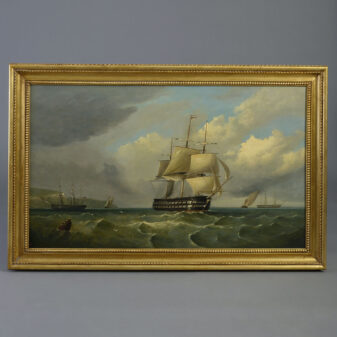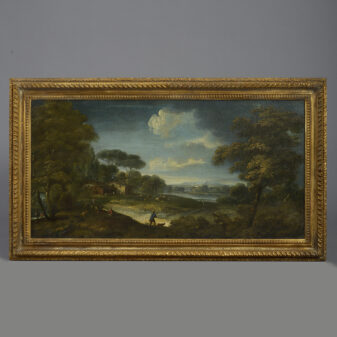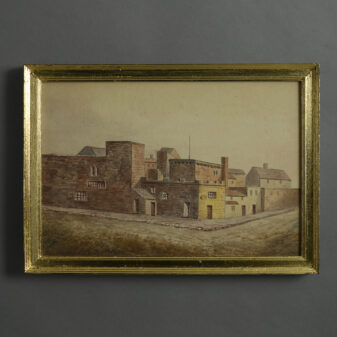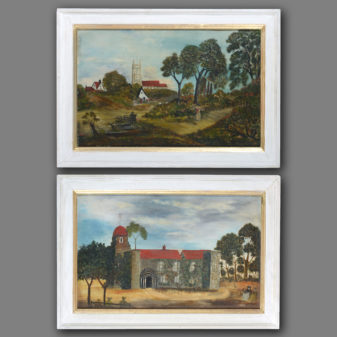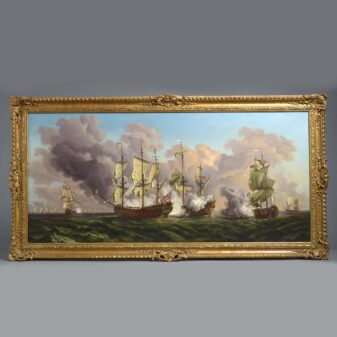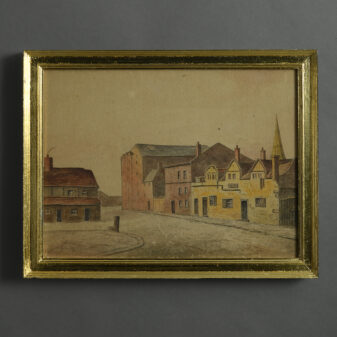Follower of Michele Marieschi c.1770. A Pair of Capriccios of Italian Ports
£12,500
SOLD
A pair of Capriccios of Italian Ports ; oil on canvas; held in original 18th century giltwood frames.
Provenance: Jane Stanhope, Countess Harrington (1755-1824), Elvaston Castle, Derbyshire, ENGLAND
This pair of impressive views were in the collection of the Earls of Harrington and are specifically inscribed with the name of Jane, Countess of Harrington, wife of Charles Stanhope the third Earl; possessing enormous wealth and ardent art collectors, both were painted by Sir Joshua Reynolds.
It was de rigueur for aristocrats in the 18th century to assemble collections of paintings and works of art that reflected an aesthetic interest in the ancient civilisations of Europe, particularly Italy. There was a desire to decorate large English houses with views of Rome and Venice – places that young nobleman would have frequented on the Grand Tour.
Painted in the second half of the 18th century, the views presented here are heavily influenced by the work of Venetian artist Michele Marieschi (1710-1744), an Italian painter of landscapes and cityscapes (veduitista). Less well-known than his famous contemporaries in this field, Canaletto and Guardi, Marieschi was born in Venice and rose to prominence after 1735 when he began to paint capricci influenced by Marco Ricci and later Venetian views inspired by Canaletto’s success with the genre.
A highly inventive painter of capricci, Marieschi was able to use his early experience as a theatrical painter to great effect when developing his compositions – scenes which are marked by strong shadows, deep spacing and flickering brushwork. This highly individual approach makes them clearly attributable to a studio assistant of Marieschi. They also compare favourably to similar port views known by the master in both composition and style (Dario Succi: Michele Marieschi, Opera Completa, Zel edizioni 2016, p.341). As with many capricci they often have some basis of exaggerated reality, and whilst at first glance much about the compositions appears possibly true, the overall design is first and foremost about creating a “romantic” and engagingly balanced picture. These views evoke the industry of the smaller ports and shore inlets around Venice that were a hive of activity constructing and supplying the city with various water craft.
Together with an assortment of old masters and contemporary portraiture these views would have been an integral part of a decorative scheme of pictures that the Countess of Harrington might have been responsible for creating at their country house of Elvaston castle.

















